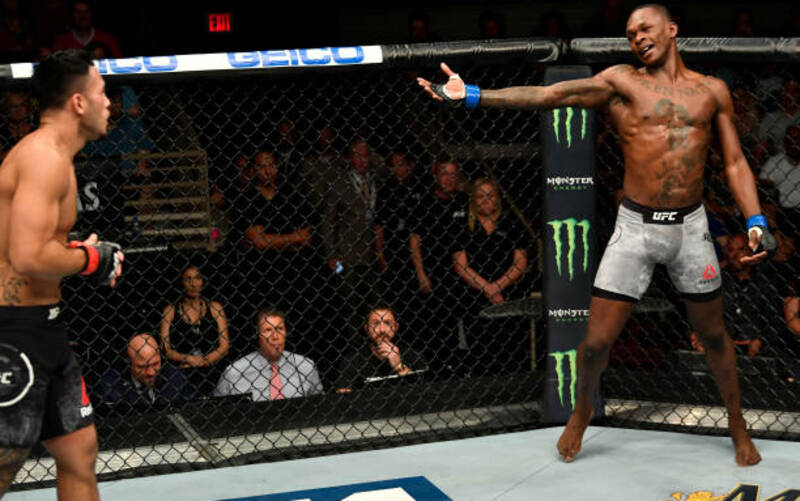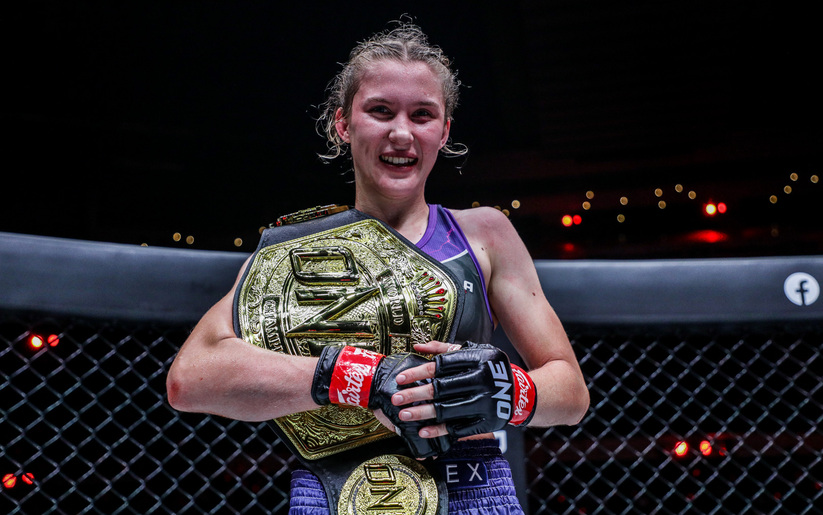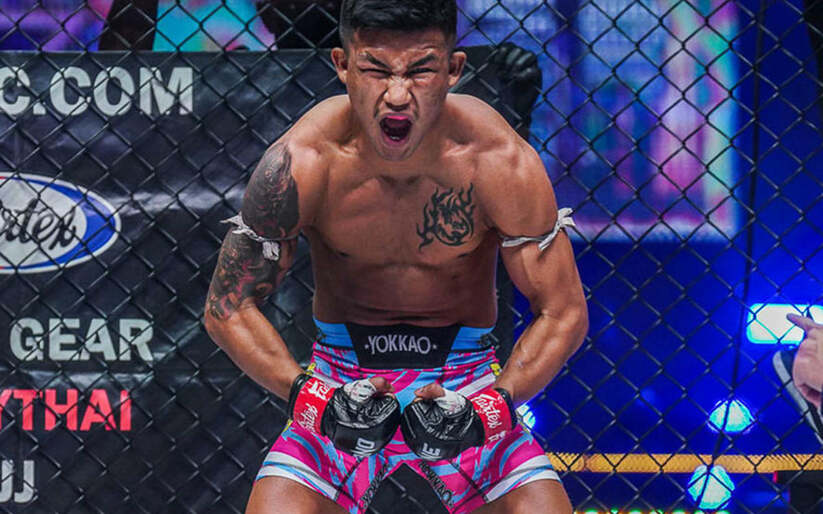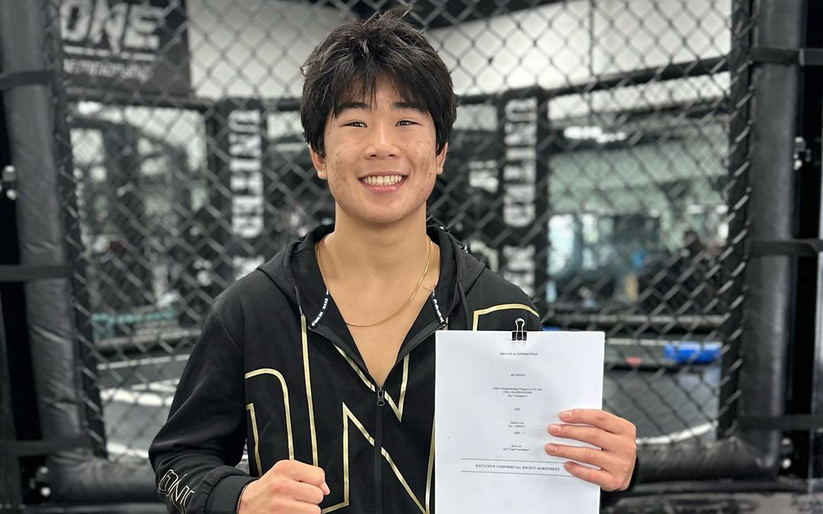Israel Adesanya‘s popularity soared to new heights after his clinical masterpiece against Brad Tavares.
The process of star-making in MMA is fraught with vagaries, contradictions, and absurd truths. A cursory glance at the buy-rate of pay-per-views headlined by the most skilled fighters in MMA will tell you that being the best isn’t enough. Foreignness can help create an air of mystique around a fighter, but its effect is somewhat diminished by the necessity of appealing to an English-speaking audience.
You can’t be too small, as the lower weight classes have proved historically abysmal draws. Hell, venture below bantamweight and you’ll have to deal with an employer seemingly intent on sabotaging the growth of your weight class.
What does seem to do the trick, however, is a confident, larger-than-life personality and a magnetic presence in the Octagon. From Conor McGregor to Ronda Rousey, the biggest stars in the industry are marked by their ability to inspire emotion outside the cage and leave fans breathless with their presence inside it.
Israel Adesanya has that first criterion down pat. If you don’t believe me, take a look at this FloCombat interview in which he criticizes the UFC brass for their irritation at one of his post-fight celebrations. In his own words, the celebration consisted of Adesanya “pretending to whip an imaginary dick out and pee everywhere to mark [his] territory.” If that doesn’t scream personality, I don’t know what fans are looking for.
On the other hand, Adesanya’s performance has lagged behind his personality since his UFC debut. He spent significant portions of his first two fights tied up in the clinch or on the ground. At range, his striking looked exponentially more skilled than his opponents, but he struggled to press his advantage to the fullest.
Israel Adesanya vs. Brad Tavares Breakdown: The Birth of a Star
That all changed at the TUF 27 Finale, where Adesanya systematically dismantled a top-eight middleweight in Brad Tavares. Tavares had been slowly but consistently working his way up the rankings since his UFC debut in 2010, losing in recent years only to the middleweight elite, and Tim Boetsch. Coming off the best win of his career against Krzysztof Jotko, Tavares seemed poised to put together a run toward the top of the division, but his momentum came to a crashing halt against Adesanya.
The Stylebender
The first thing that stands out about Adesanya’s striking game is his unparalleled skill at playing with his opponent’s expectations. Every action he takes is designed to catch the eye and distract in order to set something up. Adesanya tends to fight cautiously in the early rounds, probing with non-committal feints and punches to get a read on his opponent’s reactions and train their eye to his subtle motions. As the fight progresses, he’ll build off those setups and exploit those reactions.
Constant hand and foot feints serve to dull an opponent’s reactions. If you jab every time your elbow comes away from your ribs or your lead foot steps forward, your opponent will start picking up the timing in short order no matter how fast or technically sound the delivery is. Commit to only a quarter of those shots, however, and differentiating between a legitimate counter opportunity and a feint becomes much more difficult.
When these feints are as convincing as Adesanya’s, the opponent is forced into the uncomfortable choice of either attempting to counter punches that aren’t, or instead, letting actual strikes go unanswered. Note that Adesanya’s feints look like his punches. He doesn’t merely flick out his arm, he rotates his hips into the feint, while still avoiding the commitment that would expose him to a counter.
Adesanya’s snappy jab is hidden behind layers of feints. Along with his constant hand and foot feints, Adesanya’s low lead hand gives his jab an element of concealment, rising up from below from below his opponent’s field of view. He’ll intensify this effect by leaning over his lead hip, drawing attention to his head, while the lead hand lies coiled out of view and waiting to strike.
Alternatively, Adesanya will draw attention to his lead hand by probing lazily or just sticking it right in his opponent’s face, before launching an attack off the rear side.
If I can offer any criticism of Adesanya’s jab, it’s that he seems more reluctant to build combinations off it than he needs to be. Many of his cleanest shots in the fight came off the jab, but it was mostly kept to a pot-shot even though Tavares presented little counter threat. When he did use his jab to close distance, Adesanya would an angle inside of Tavares’ stance to take his head out of the path of counters and shorten the path of his right hook.
Adesanya’s straight is just as difficult to read as his jab. He constantly pumps his hips and shoulders, giving the appearance of sitting down on the straight without any of the commitment. Because the rear straight and round kick use the same preliminary hip motion, these hip fakes add another layer of disorientation. Tavares not only has to guess whether or not Adesanya is really throwing a strike, but whether it’s a fist or a shin about to fly at his head.
When Adesanya throws his straight, the delivery is blindingly fast. The speed of his straight stems not only from athleticism and tight mechanics, but he makes the trade-off of building speed into his punching form. Adesanya completes most of the delivery before throwing the punch, shaving time off but losing the massive power generated by hip connection. He’ll start with his weight already transferred forward, his rear shoulder rotated inwards, and his rear foot picked up on its ball. From there, all that’s left is a very slight rotation of the hips and shoulders to push the arm toward its target. This shortened straight is a classic tactic favored by boxing greats such as Roy Jones and Floyd Mayweather.
Along with concealing his punches, Adesanya’s hip feints allow him to play with his opponent’s sense of anticipation. A crucial part of a fighter’s defense lies in his ability to predict and anticipate his opponent’s likely move based on their positioning.
When a fighter is coiled over the rear hip with weight loaded on the rear leg, a la Dan Henderson, he is in perfect position to transfer weight explosively forward into a rear straight or overhand. Likewise, when a fighter is coiled over his lead hip, his opponent will generally be expecting a lead hook. By leaning over his lead hip and firing off the straight, Adesanya makes it more difficult to anticipate. If his opponents get too comfortable waiting on the straight when he’s on his lead hip, the threat of the up-jab exists to keep them honest.
Adesanya will use these hip feints to close distance, falling in behind them directly with a hop-step and firing off a strike without resetting his hips. The hop-step allows him to sneakily close distance without the tell carried by stepping forward, while maintaining a strong stance. In each sequence, Tavares has no idea what to expect and resorts to backing right into Adesanya’s strikes.
Adesanya also found success with the traditional southpaw double attack, pairing the straight and body kick together to obfuscate his target.
When watching Adesanya strike, it’s clear he has something that most fighters in MMA lack. Aside from the technical nuances of his game, his comfort level alone is off the charts. MMA has a long tradition of fighters as comfortable on the ground as they are breathing air. The intersection of competition grappling and MMA has produced dual-sport athletes such as Demian Maia, Roger Gracie, Ronaldo “Jacare” Souza, and many more. While you can look at the Wikipedia page of any world-class grappler and likely find a handful of MMA fights, if not a lengthy career, instances of truly world-class strikers transitioning to MMA are far less common.
Every action taken by Adesanya is efficient, calculated, and deliberate. There’s no panicked abandoning of position or exaggerated giving of ground. When Tavares would jab into his right hand, Adesanya would slip or pull back from the jab and either shoulder roll the right cleanly, or give just enough ground to make it miss.
One unique aspect of Adesanya’s game that is rarely done well in striking is his habit of back-stepping. As we’ve discussed previously, stance is the most important layer of protection in any striking affair and any deviation from a strong stance can put one in immediate danger. However, a strong grasp on the fundamentals of striking brings with it the knowledge of how and when to deviate from them. Adesanya will frequently step his lead foot back into the opposite stance mid-exchange in order to lengthen the distance, take angles, and change the weapons available to him. Although it briefly puts him in a compromised position, he is rarely punished for it.
Adesanya often uses frames to keep himself safe while back-stepping. In the sequences above, his left side is open as he’s circling into Tavares’ right hand. In order to cover his head while he squares up, Adesanya extends his lead hand to project his shoulder in front of his chin.
His ability to stay safe in dangerous positions also comes down to anticipation. Adesanya pulls his head away as Tavares jabs in. When Tavares steps in deep with a heavy weight shift onto his lead leg, Adesanya knows to expect a rear straight or overhand, and comfortably back-steps out toward the punch while slipping outside or weaving underneath. In some of his previous fights, Adesanya landed counter-punches while stepping backward, but he was content to angle out and take his back off the cage against Tavares.
The clip above perfectly encapsulates the absurd brilliance of Adesanya’s style. Ever since Anderson Silva knocked out Tony Fryklund with one of these reverse upward elbows back in 2003, MMA fighters have been attempting them to very little avail. Just ask Krzysztof Jotko, who insists on trying it in every fight and never lands it. Adesanya doesn’t land it either, but he uses it to set up further offense. He shows the elbow to get Tavares closing his guard down the middle, before hooking around it, and to cover his entry into a straight.
That is Adesanya’s game in a nutshell – he’ll execute stylish, flashy moves, but they always connect to a sound process. The spinning things, the jumping things, and the backward things are thrown with the intent of making it easier to land his bread-and-butter strikes, the straight punches, the round kicks, and the hard points of his elbows and knees.
Fighting With Frames
In his kickboxing days, Adesanya had a particularly “sticky” infighting game, reminiscent of Floyd Mayweather’s. Just like Mayweather, Adesanya constantly and ruthlessly controls his opponent’s head on the inside, breaking their balance and preventing them from transferring weight into punches.
He’ll often convert missed punches into frames, laying his forearm across the face to prevent his opponent from turning to face him while he takes an angle.
In his MMA career, Adesanya’s use of frames has been more focused on keeping his opponents at distance. He’ll palm their face away after an exchange or throw up stiff-arms as they look to enter. Given Adesanya’s reach and slick outside striking game, his extended arms are the perfect tools to keep opponents on the outside and impede their forward movement. Since grapplers need to close distance in order to shoot on him, Adesanya’s use of frames to maintain distance greatly aids his takedown defense by preventing opponents from attaining positions that allow them to shoot comfortably.
Along with physically blocking entries, his extended hands serve as a sort of long guard to protect his chin as he backs up. The shoulder covers his chin as he exits and he’ll alternate sides as he anticipates his opponent’s next attack. The extended hand can also serve to stuff punches as they begin by blocking the shoulder or bicep.
Adesanya uses his frames to break his opponent’s balance. There’s an oft-repeated adage in combat sports that says “Where the head goes, the body follows.” What this means is that if you control the head, you limit the ways in which his body is able to move. In grappling sports, this will most often take the form of a strong cross-face, forcing the opponent to look away to prevent his body from turning into you.
Adesanya would leave his hands extended after punching and briefly toss Tavares’ head underneath. Tavares would then need to halt his advance and take a moment to regain his balance, during which Adesanya could either follow up or exit safely.
Head control is a tried and true method in striking sports for exiting exchanges on one’s own terms. Floyd Mayweather would famously backhand his punches into his opponent’s face to disrupt their balance.
The frames serve as a reliable clinch entry for Adesanya as well. He’d catch Tavares’ wide shots on his shoulder and lock up a collar tie before going to work with knees. Ronda Rousey had plenty of success using straight shots and extended hands to gain access to her opponent’s head, though she was only able to do consistently it off her jab.
In the Clinch
Adesanya’s clinch game has been a weak point since his UFC debut. His balance looked to be easily broken and he had trouble dealing with the underhooks of Rob Wilkinson and Marvin Vettori. Against Tavares, however, his comfort, stability, and positional awareness looked greatly improved.
Adesanya did a good job using collar ties to create distance in the clinch and angle off the cage. He even managed to toss Tavares on his back a couple times, using a slick sasae tsurikomi ashi foot-sweep in the clinch, and hitting an osoto gari off the collar tie.
Collar ties represent a sort of counterpoint to underhooks in the clinch. Where an underhook collapses the space and puts the user in direct chest-to-chest contact with his opponent, the collar tie creates a barrier that forces separation. The head control afforded by a collar tie can be used to briefly break the opponent’s balance to create an opportunity to circle off the cage.
The recent fight between Rafael Dos Anjos and Colby Covington provides a great study on using collar ties to counter underhook control in the clinch. Adesanya’s clinch game still has a long way to go, and he’s yet to face a strong underhooker, but his improvements against Tavares speak to his athletic potential and ability to develop the skills necessary to succeed at a high level.
Adesanya’s offensive work in the clinch was excellent. He landed several brutal elbows off hand-traps, pulling Tavares’ guard down before folding over it with an elbow.
Here Adesanya controls both wrists and pulls the guard down to fold into an elbow on his left side. Tavares tries to punch as soon as Adesanya lets his hand go, but Adesanya simply raises his left arm, takes the punch on his shoulder, and locks on the collar tie, which he uses to pull Tavares into an elbow on his right side. Adesanya combines sound transitional awareness in the clinch with the comfort to defend strikes without creating excess distance.
One area that Adesanya could stand to patch up is his head position. Whether he was working off the double collar tie or a whizzer, his head was often upright, allowing Tavares to get underneath it in a position of leverage. Tavares was able to pin him to the fence briefly by digging his head into Adesanya’s jaw and landed a few punches from framing off the double collar tie. Maintaining dominant head position with the forehead in the opponent’s face is important for closing off openings in both takedown-oriented clinches and striking-oriented clinches.
Yeah, but can he stop a double?
We’ve already covered tactics Adesanya uses at distance to impede takedowns such as his feints, footwork, and framing, so let’s dig into his wrestling now.
Adesanya demonstrated decent head control in his counter-wrestling. Whenever Tavares shot in for a double leg, Adesanya would use a whizzer and cross-face to peel Tavares off his legs. He was a bit late in his reactions however, often neglecting to whizzer and cross-face until Tavares was already in on his hips, which is often too late. It’s also concerning how he would run himself onto the fence after defending the shot rather than angling out. He was able to create space and control the head with frames to angle off after his back hit the cage, but a stronger clincher could use that habit to control him.
Adesanya’s habit of falling in behind his shots with a hop-step or a shift forward allows him to cover ground effectively, but it also presents opportunities for opponents to get in on reactive takedowns. Tavares was able to run him onto the fence a on a few occasions by timing his bounces, and a better wrestler could take him off his feet.
Adesanya’s wrestling didn’t look bad, but it’s also clear that it needs to improve if he is to consistently beat top-seven middleweights. There are a few problems with using Brad Tavares as a litmus test for his takedown defense.
The first issue is just plain and simple athleticism. Tavares was able to get in on Adesanya’s hips cleanly, but simply hipping in hard was enough for Adesanya to halt Tavares’ momentum while he established grips. Instead of driving straight through, Tavares would meet a wall when he hit Adesanya’s hips, having to stop and re-compose his momentum. Some of that was due to Tavares’ shot form and shooting from too far away, but a poorly-setup, overextended shot from someone like Yoel Romero or Chris Wideman timed when Adesanya squares his hips would likely run him through.
The second issue is that Tavares lacks strong chain wrestling. When Tavares shot a double leg on Adesanya, Adesanya only had to worry about the double leg. Tavares would stop wrestling when his initial shot failed. Wrestlers able to implement a takedown game at a high-level will use failed takedowns to transition to the next one. Every defensive response made presents an opportunity to exploit the reaction with a follow-up and the wrestling exchange ends only when every strong grip is forcibly pried out of their hands.
Adesanya’s wrestling can be firmly categorized as “needs improvement,” but it needs far less improvement than it did merely two fights ago. For a fighter who’s shown the willingness and ability to make those kinds of large improvements between fights, the wrestling disparity between Adesanya and the middleweight top five may be surmountable.
Considering that Adesanya spent entirely too much time underneath Marvin Vettori in his last fight, his overall grappling game looked surprisingly sharp.
When he was briefly taken down, Adesanya immediately began to create frames and work to bring his knees inside. Once his knees were between himself and Tavares, he could push off to create space, threatening a tripod sweep to further back Tavares off. As Tavares punched back into the guard, Adesanya managed to threaten a triangle. Adesanya ended up giving his back to stand up in a fairly sloppy manner, but it worked well enough against Tavares.
Adesanya was even able to reverse Tavares with a kimura at one point.
His use of guillotines was particularly impressive. He was able to force Tavares onto his back with the guillotine several times, even ending the fight in a deep mounted guillotine. The most important point to note here is that Adesanya stops the takedown completely before attempting the guillotine. Too often we see fighters give up a takedown by using a guillotine as their primary defense when it isn’t warranted. If you can’t afford to play off your back, you can’t afford to stop defending the takedown when your man is in on the hips, and Adesanya deserves credit for recognizing exactly where the guillotine fits into his game.
Who’s Next?
Although running through a top-ten fighter usually warrants a large step up in competition, it might be worth it to pump the brakes slightly on Adesanya’s run. His wrestling still leaves much to be desired, but at the same time, he’s making large improvements between each fight. If they throw him to a Derek Brunson or Chris Weidman right now, it will likely result in a prototypical prospect drubbing. If he’s built up a bit more slowly, however, there’s a much better chance one of those fights could result in a badly-needed star-making performance.
Dave Branch and Krzysztof Jotko both seem like sensible next steps. Originally the question facing Adesanya was whether or not he can deal with an opponent who can wrestle. He can. Now we’ve moved on to determining how he stacks up against a legitimately good wrestler. Both Branch and Jotko would test his skill set with their strong, grinding clinch game, and both possess the process to get the fight into their preferred area on the feet, which Tavares lacked. Most importantly, both Branch and Jotko represent very winnable matchups for Adesanya, which would give him the chance to add needed dimensions to his game while continuing his ascension.
Another option that immediately comes to mind is to pit Adesanya against a fellow prospect, Paulo Costa, who recently scored an impressive TKO victory over Uriah Hall. While Costa likely wouldn’t test Adesanya’s clinch and wrestling game the way Branch or Jotko would, the prospect matchup would put a lot of shine on both guys and elevate the winner to the status of likely contender.
Regardless of his next step, Adesanya has proved emphatically that he is a damn good MMA fighter. It’s exceedingly rare that the MMA world gets a genuinely world-class striker in the prime of his career, much less a striker who can handle the grappling as well as Adesanya. Even if he ultimately fails to break the top five, forcing the middleweight division to prepare for and deal with striking of Adesanya’s caliber can only have a positive effect on the sport.
Main Photo
Embed from Getty Images




This is a great breakdown. Do you have a version where every gif is working? Would make it even better!
Hey Alex,
This article was too popular apparently and the UFC flagged some of the content for copyright. I think Ryan has them still hit him up on Twitter!